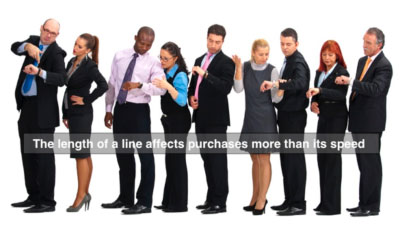
Vol. XIV, No. 1, January 2014
- Editor's corner
- Queue line design: theory versus perception
- Silverlake, the Family Place
- Four years after the economic recovery, America's birth rate remains depressed
- Foundations Entertainment University coming to Phoenix
- The Silver Screen is losing its shine
- Surfing in the desert
- Da Nang, Vietnam project gets a name
- It is very simply a people concept
- How to be friendly to food allergy sufferers
- The scoop on Chuck E. Cheese's going private
Queue line design: theory versus perception
We've all often faced the decision of whether it's worth getting in a line to purchase something, be it at a festival, at the supermarket or coffee at a café.
In last month's issue, our article about queue design said that a single-line multiple-server queue will reduce waiting times. Now along comes research from Columbia University Business School in New York that shows that a single-line queue can put customers off and a single-line longer than 15 customers can actually result in a 10% decrease in sales. The research showed that customers' decision of whether to get in a queue to purchase something focuses a lot more on the length of the line than the number of servers, even if the line is moving quickly.

The authors summarized, “An implication of this finding is that pooling multiple queues into a single queue may increase the length of the queue observed by customers and thereby lead to lower revenues.”
The research study also found that there is a sensitivity to queue length based on customers sensitivity to prices - the customers who are least sensitive to pricing - those who purchase the most premium items - are also the most sensitive to wait time. Hence, long queues are particularly harmful for the most profitable customer segments.
Although the research analyzed data on supermarket check-out lines, it does have implications for location-based entertainment venues when it comes to customers making impulse and additional purchases. A long line can very well make them abandon their purchase, and down will go per capita expenditures.
Read more about queue design and customers perceptions of waiting times in our previous article The science of the queue.
Vol. XIV, No. 1, January 2014
- Editor's corner
- Queue line design: theory versus perception
- Silverlake, the Family Place
- Four years after the economic recovery, America's birth rate remains depressed
- Foundations Entertainment University coming to Phoenix
- The Silver Screen is losing its shine
- Surfing in the desert
- Da Nang, Vietnam project gets a name
- It is very simply a people concept
- How to be friendly to food allergy sufferers
- The scoop on Chuck E. Cheese's going private



